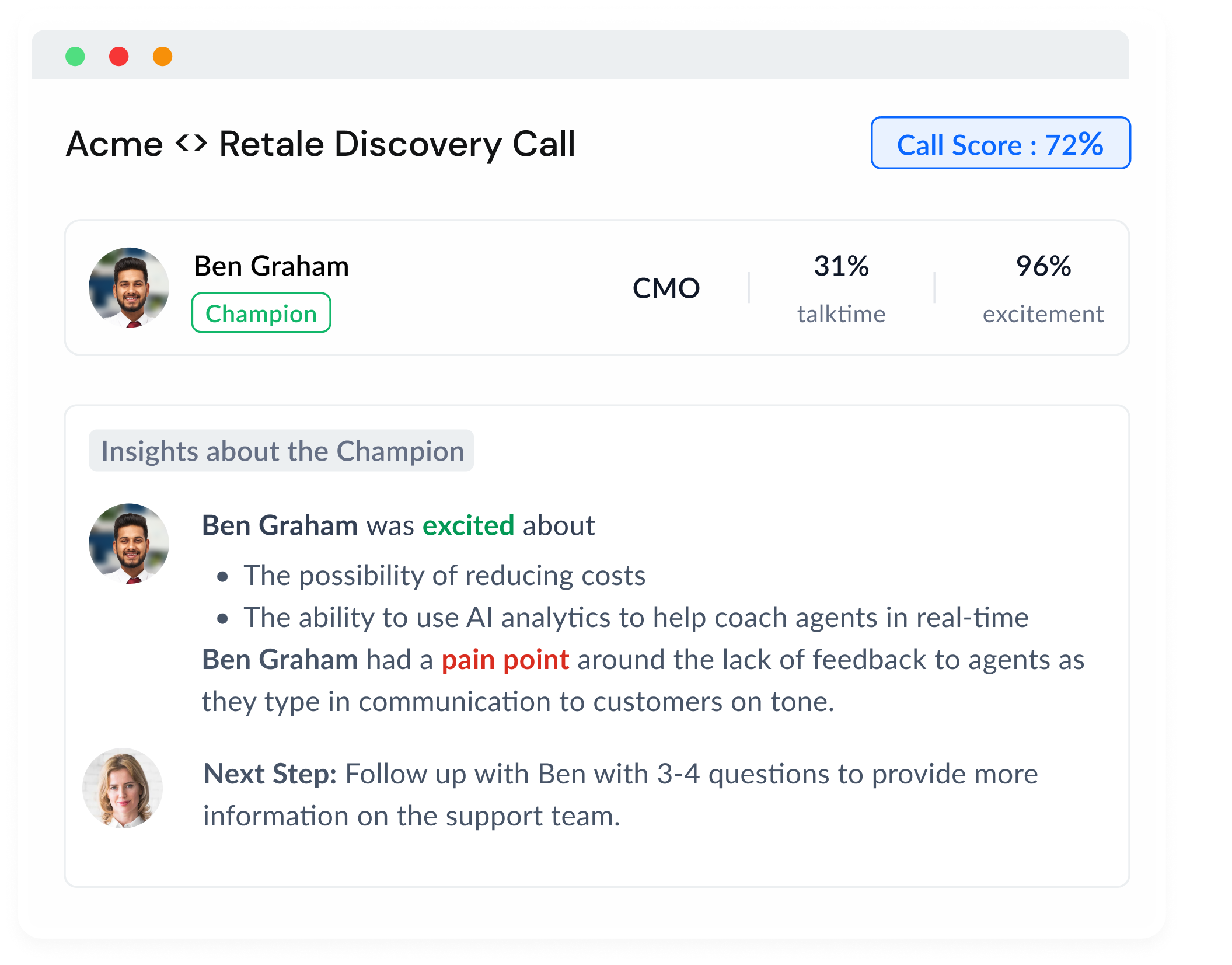In the realm of sales, chaos is the one guest you don't want at your party. Random acts of selling, as humorous as it might sound, can lead to missed opportunities, confused customers, and ultimately, a declining bottom line.
Enter the well-structured sales process, your seasoned guide through the thickets of the sales jungle, your trustworthy roadmap leading you to the shining city of Successville.
Much like a recipe for a complex dish, a sales process breaks down the path from initial contact to a sealed deal into manageable, understandable stages. But what are these stages, and how can you navigate them effectively? Buckle up, because we're about to embark on a journey through the ultimate sales process checklist.
The Comprehensive Sales Process Checklist
Prospect Research and Identification
Your sales journey begins long before you make that first call or send that initial email. It starts in the strategic war-room of identifying your ideal customer profile (ICP). Think of it as a detailed sketch of your dream customer: their industry, company size, job role, what keeps them up at 2 AM, their preferred brand of coffee - the works. Once your ICP is set, it's time for prospect research.
This task is akin to creating a detailed sketch of your dream customer - their needs, their characteristics, their behaviors. Once your ICP is set, it's time to launch your prospect research mission, hunting for potential prospects who fit snugly into this profile.
For instance, if your ICP is "a CTO at a mid-sized SaaS company", you'd use LinkedIn, industry databases, or a tool like Clearbit to find potential prospects fitting this profile.
Initial Contact and Qualification
Think of the initial contact as the overture to a grand symphony that is your sales process. It's the first note that sets the tempo and tone for the entire performance to follow. This stage is where you interact directly with your potential client for the first time. The stakes are high, as the impressions formed now can significantly influence the course of your relationship.
For instance, consider an email as your initial contact point. This isn't just any email; it's a carefully crafted digital handshake that serves to pique the prospect's interest. A fine blend of personalization, relevance, and value can help make this handshake firm and memorable. Let's say you're reaching out to a CTO of a mid-sized SaaS company. A broad, generic email won't do. Instead, you might want to refer to specific challenges typical to their role or industry or even comment on a recent company achievement they had. The idea is to stand out from the crowd and resonate with their situation.
Following up the initial contact with a qualification call can help you delve deeper. Here, your aim is to confirm whether the prospect fits your Ideal Customer Profile (ICP) and has a genuine need for your solution. This conversation can be the difference between heading down a promising path or ending up in a cul-de-sac. For example, during your call, you might uncover that the CTO is already midway through implementing a similar solution, indicating that they may not be a qualified prospect at this time.
Remember, this stage is not just about pushing for a sales pitch. It's about establishing a connection, understanding the prospect's situation, and identifying whether your solution could potentially resolve their issues. This phase lays the groundwork for the upcoming stages, ensuring that your sales symphony hits all the right notes. The initial contact and qualification stage is akin to a litmus test, helping you identify the opportunities worth pursuing and the ones best left aside. It's about being smart with your resources because, in sales, time is indeed money!
Need Assessment (Discovery Call)
Welcome to the exploratory phase, where you don the hat of a detective, diving deep into understanding your prospect's needs, goals, and the prickly pain points they face. Your tools? Open-ended questions that encourage them to share and a pair of keen ears to listen - really listen.
A discovery call, much like the human body, is composed of several essential elements. These components work together to create a cohesive, effective conversation that can propel the sales process forward.
- The Warm-up: Begin the call by setting a friendly, professional tone. Build rapport with the prospect by asking about their day, recent news, or other personal interests. This is akin to warming up before exercise – it gets the conversation muscles limber and ready for action.
- Context and Purpose: After the warm-up, transition to the main event by establishing the context and purpose of the call. Briefly explain what you hope to achieve and how the conversation will benefit the prospect. This sets the stage for a productive dialogue.
- Open-Ended Questions: The heart of the discovery call lies in asking open-ended questions that encourage the prospect to share their story. Inquire about their pain points, objectives, and current solutions. By actively listening, you gain insights that can inform your sales approach.
- Probing Deeper: Once you've gathered surface-level information, probe deeper to uncover the underlying motivations, constraints, and decision-making processes. These insights can prove invaluable in tailoring your pitch and overcoming objections later in the sales process.
- Sharing Value: As the conversation unfolds, look for opportunities to share relevant value propositions, case studies, or testimonials that address the prospect's specific needs and concerns. This helps to establish credibility and pique their interest in your product or service.
- Setting Next Steps: Finally, before ending the call, set clear expectations and next steps. Whether it's scheduling a follow-up call, a product demo, or sending additional information, ensure that both parties have a roadmap for moving forward.
Presentation and Proposal
Time to take center stage and shine the spotlight on your solution! Like a tailor expertly crafting a bespoke suit, you'll need to custom-fit your presentation to address the prospect's specific needs and pain points, as revealed in the discovery call.
As an example, let's say during your discovery call, you gleaned that our hypothetical CTO is struggling with frequent system downtime and the company is bleeding revenue as a result. Now it's time to showcase how your product or service can significantly reduce this downtime, thus saving the company a significant amount of money. Your presentation could include real-life examples of similar problems you've solved, testimonials from satisfied customers, and data to support your claims.
The art of a compelling presentation lies in the ability to tell a story – a story where your solution is the hero that saves the day. It's more than just throwing a lot of information at your prospect; it's about crafting a narrative that resonates with them on a deeper level.
But the show doesn't end with the curtain call. The encore? A follow-up proposal, delivering a tangible representation of what was discussed during the presentation. This should clearly detail the specifics of your solution - what it does, how it solves the prospect's problems, and the pricing details. It should also include terms and conditions, timelines, and any other pertinent details.
Take this as a golden opportunity to reinforce the key points from your presentation and solidify your solution as the best fit for their needs. Remember, the proposal often circulates among decision-makers who might not have been present during your initial presentation. So, it should be comprehensive, persuasive, and concise, painting a compelling picture of why your solution is the perfect match for the prospect's needs.
Handling Objections and Negotiations
Handling objections and negotiations can be akin to dancing the Tango – it's about rhythm, responsiveness, and a lot of heart. This stage of the sales process is where your prospect may express reservations, doubts, or plain disagreements. These objections could range from concerns over price to doubts about the implementation timeline or feature set.
Take, for instance, our hypothetical CTO expressing concerns about the hefty price tag on your solution. Instead of treating this as a stumbling block, treat it as an opportunity to demonstrate the value that your solution brings to the table. Show how, in the long run, your solution can save the company money or how it offers a superior ROI compared to competing products.
Then, let's say, there are objections over the implementation timeline. Your prospect might fear that introducing a new system could lead to a disruptive transition period. Here, addressing the concern head-on and providing a comprehensive, phased implementation plan can assuage the prospect's fears.
Or perhaps the prospect is unconvinced about whether your solution has a specific feature they deem critical. Now's the time to highlight how your solution's existing features can address their needs or discuss future product development plans.
Effective handling of objections is more than just rebuttal; it’s about empathizing with the prospect, validating their concerns, and then illustrating how your solution can overcome these perceived hurdles. It's about guiding the prospect from a state of doubt to one of confidence in your solution.
Simultaneously, this stage also involves negotiations, and let's face it, negotiating can sometimes feel like trying to perform a delicate ballet on a tightrope. It's a delicate balance of give-and-take. It's about finding a common ground where the prospect sees value and your company maintains profitability.
For instance, if the CTO insists on a lower price, you might negotiate by offering flexible payment terms or suggesting a smaller initial engagement. The key here is to maintain transparency and strive for a win-win outcome, creating a foundation for a strong, long-term relationship.
In essence, handling objections and negotiations is an art, one that involves a mix of empathy, adaptability, persuasion, and some good old-fashioned problem-solving!
Closing the Deal
The moment of truth has arrived! When your prospect is ready to make a buying decision, it's time to close the deal. This stage may involve final negotiations, crossing the 't's and dotting the 'i's on contracts, or setting the stage for product delivery or service commencement.
Post-Sale Follow-up and Relationship Management
After crossing the treacherous waters of objections and negotiations and successfully landing the deal, it's tempting to believe that the journey has come to an end. But in reality, the adventure has just begun. The post-sale follow-up and relationship management stage is where you cultivate an enduring partnership and pave the way for future opportunities.
Let's consider our hypothetical CTO again. The solution has been implemented, and it's working as promised. Fantastic! But your role doesn't end here. An effective post-sale follow-up starts with a 'thank you' - an acknowledgement of their decision to trust your solution. A simple email or call expressing your gratitude can go a long way in cementing your relationship.
Now, it's time for you to switch gears from selling mode to servicing mode. Regular check-ins to ensure they are satisfied with the product and are encountering no hiccups in using it are essential. Let's say, during one of these check-ins, you find out that the CTO is struggling with one of the features. Prompt support here will not only help resolve the issue but also demonstrate your commitment to their success.
Consider the check-ins as a stage for you to reiterate the value your solution is providing. For instance, pointing out that since the implementation, the system downtime has reduced by X% will reinforce the positive impact of their decision.
But post-sale follow-up isn't just about ensuring smooth sailing; it's also about looking ahead to the next voyage. Continuous engagement, like sharing relevant content, industry updates, or new feature releases, keeps the relationship vibrant and opens the door to upselling or cross-selling opportunities.
In essence, post-sale follow-up and relationship management is about nurturing a loyal customer base and turning them into advocates for your product. The real voyage of discovery consists not in seeking new landscapes but in having new eyes. In the realm of sales, these new eyes are your satisfied customers, advocating for your solution and becoming a testament to your commitment towards their success.
This stage is proof that, in sales, the end of one journey is just the beginning of another! And every beginning marks the start of a journey towards new sales success stories.
Conclusion
Navigating the vast seas of the sales process can be a daunting task. But equipped with the right map – in this case, a comprehensive sales process checklist – you are well-prepared to chart your course to success. From the initial contact to managing ongoing customer relationships, each stage requires a unique blend of skills, strategies, and a healthy dash of persistence.
And remember, you aren't navigating these waters alone. With Sybill by your side, adding a layer of AI-powered insights and efficiency to your sales process, you're transforming not just the way you sell, but the results you achieve.
As you journey towards your sales goals, let this checklist be your guiding star. It's time to hoist the sails, set your compass, and steer towards the golden horizon of sales success. Embark on your journey with confidence, because with the right tools, the right approach, and the right mindset, the vast seas of opportunity are yours to conquer. Bon Voyage!















.png)





